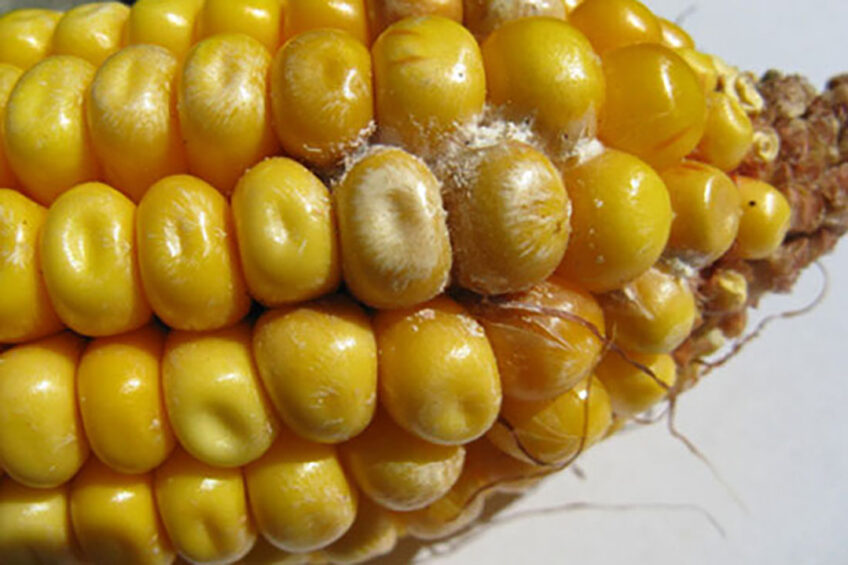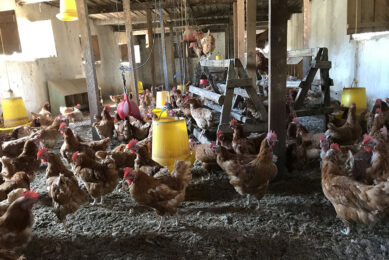Enzymatic management of the mycotoxin problem

Today, the mycotoxin challenge is greater than ever. Enzymatic inactivation presents a selective and effective solution to this increasing problem.
Fungal contamination of grains is an ongoing issue, but due to climate change and the great adaptability of fungi, the problem is resurfacing. As a result of new farming methods, such as no-till and genetic modifications that impact the growth of cereals, there is an increasing incidence of fungal contamination of feedstuffs, from crop to grain storage. If environmental conditions are unfavourable, mould may lay dormant for long periods, and stress conditions may result in the production of a series of toxic metabolites, termed mycotoxins.
Financial loss
The international mycotoxin prevalence study by BV Science in 2019 found that 76% of the samples tested positive for mycotoxin presence. Of these, 41% contained more than one mycotoxin simultaneously. Mycotoxin contamination of feeds can predispose many livestock diseases, and lead to great economic losses from reduced growth performance. The annual monetary losses because of mycotoxin contamination of grains is US$ 900 million a year.
The simultaneous presence of multiple of mycotoxins may generate synergic, potentiating effects, that is to say, different mycotoxins acting on different parts of the same cellular pathway may exacerbate a disease greater than the sum of the 2 individual mycotoxins. For example, T2 increases reactive oxygen species (ROS) levels, whereas Aflatoxin B1 inhibits the ROS clearance mechanisms resulting in a ROS imbalance and greater cellular damage.
Enzyme inactivation mechanisms have proven to be an efficacious platform for detoxification of mycotoxins, which are poorly controlled by traditional mechanisms in animal production. Studies in the areas of microbiology and enzymology have led to the discovery of enzymes produced by microorganisms that are capable of catabolising mycotoxins.
Mycotoxin inactivation
Enzymes are very specific, as they catalyse specific chemical reactions at specific sites in molecules. At the same time, enzymatic activity is also dependent on environmental characteristics such as temperature, pH or activators and inhibitors from the environment. Our scientists discovered enzymes that are specific for inactivation
of the mycotoxins relevant in monogastric animal production. We have developed Detoxa Plus, an efficacious and safe enzymatic inactivation agent that targets an array of mycotoxins commonly found in animal feedstuffs, and specifically formulated for the control of the most prevalent mycotoxins in monogastric animal feed.
Figure 1 – Comparison of Fumonisin B1 content of faeces before and after feeding Detoxa Plus. With Detoxa Plus only the inactivated hydrolysed fumonisin B1 is present in the faeces.
In vivo mycotoxin degradation analysis proves the efficacy of Detoxa Plus The fumonisin B1 content is measured in poultry faeces before and after Detoxa Plus feeding (Figure 1). Fumonisin B1 is not metabolised by poultry, thus showing its toxic effects. It is excreted in its intact form as shown on the purple line in the figure. Enzymes in Detoxa Plus inactivate fumonisn B1 at the beginning of the digestive tract, thus only the inactivated, harmless hydrolysed fumonisin B1 is present in the faeces.
Enzymatic inactivation of mycotoxins is the most specific method for managing the ever-present problem of mycotoxin contamination of feed. Detoxa Plus offers a guaranteed inactivation efficacy for the currently most problematic and prevalent mycotoxins in animal feed.
References available on request
Author:
Dr Zsofia Bata
 Beheer
Beheer






 WP Admin
WP Admin  Bewerk bericht
Bewerk bericht